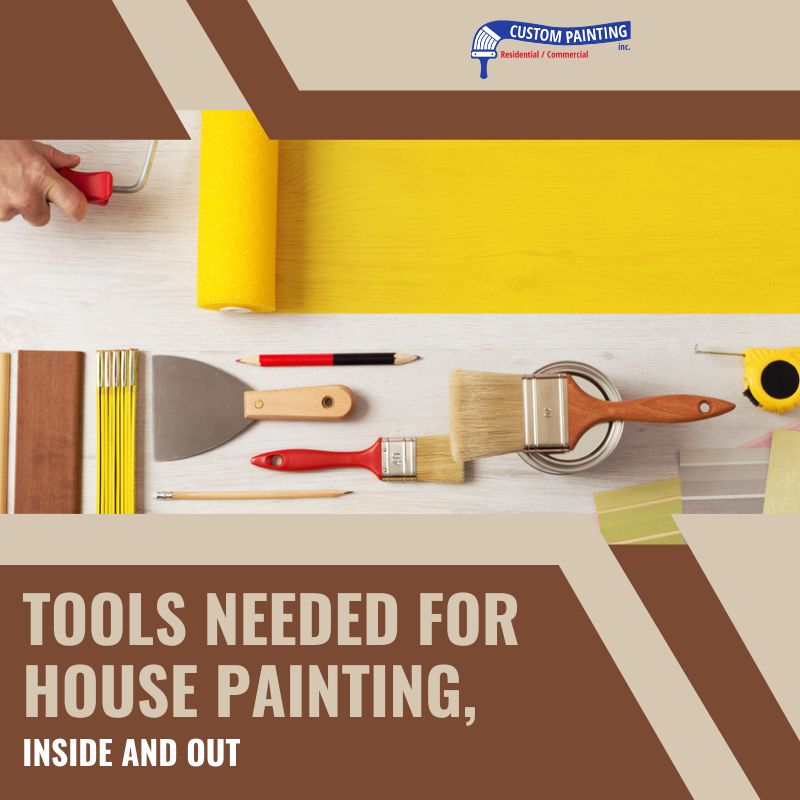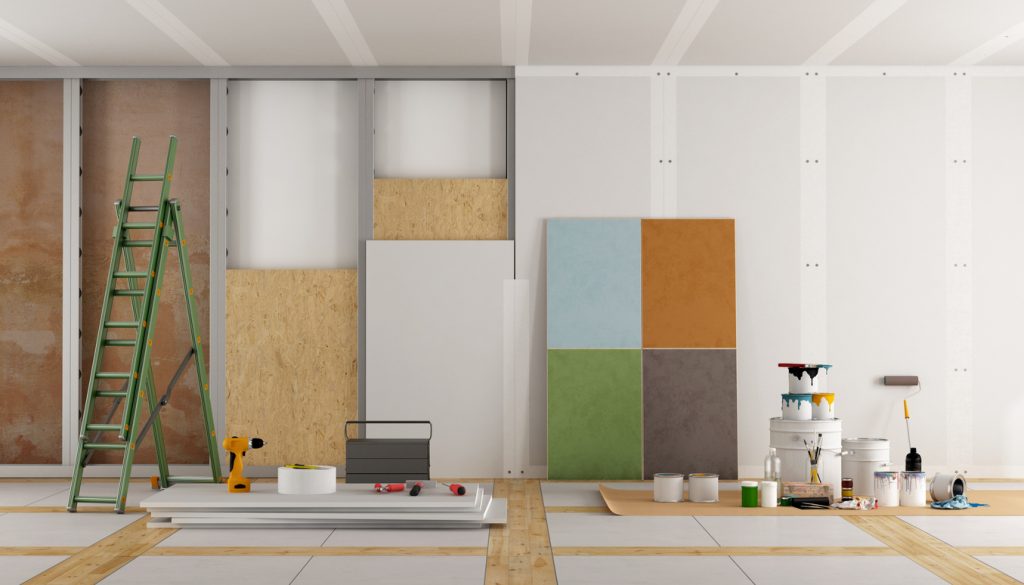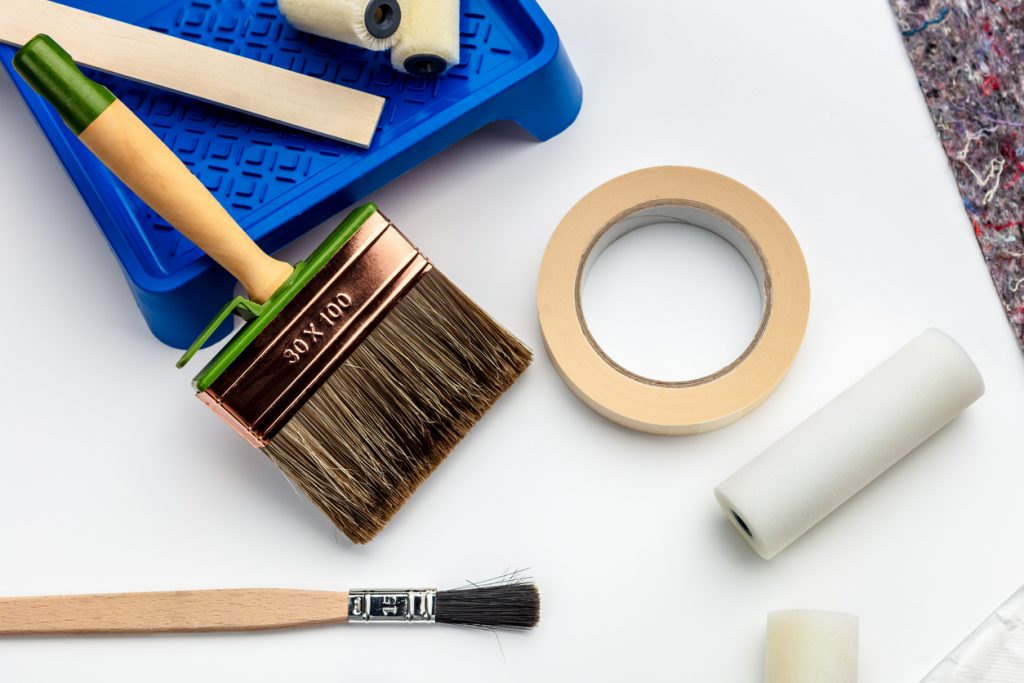House painting in San Ramon, whether the interior or exterior, is a rewarding project that can dramatically transform your space. However, achieving a professional-quality finish requires more than just a can of paint and a paintbrush. The right tools and equipment can make the difference between a job that looks ‘DIY’ and one that screams ‘pro.’ This guide will walk you through the essential tools needed for house painting, covering interior and exterior projects, to ensure you get the best results possible.
Preparing Your Space for a Painting Project
Embarking on a painting project is an exciting endeavor that promises to rejuvenate your space. Whether you’re freshening up a cozy room or revamping the entire exterior of your home, the preparation stage is crucial. It lays the foundation for a smooth painting process and ensures a professional-looking finish. Here’s how to prepare your space effectively for painting, both inside and out.
- Clearing the Area: Start by removing as much furniture and personal items as possible from the room. For larger pieces that can’t be moved, push them to the center and cover them with drop cloths or plastic sheeting. This not only protects your belongings from paint splatters but also provides you with ample space to move around freely.
- Protecting Surfaces: Floor protection is paramount. Whether you have hardwood, carpet, or tile, safeguarding your floors from drips and spills will save you a lot of cleanup time. Use canvas drop cloths for areas where you’ll be working directly above. They’re absorbent and slip-resistant, making them a safer option than plastic. Plastic sheeting might suffice for areas where you’ll just be passing through. When it comes to windows, trim, and doorframes, painter’s tape is your ally. Apply it carefully along the edges to ensure clean, straight lines. Make sure the tape adheres well to prevent paint from bleeding underneath, but also be mindful that it doesn’t stay on too long after painting to avoid peeling off any fresh paint.
- Cleaning and Repairing Surfaces: A clean surface is essential for paint adhesion. Dust, dirt, and oily residues can prevent paint from sticking properly, leading to an uneven finish. For interior walls, a simple wipe-down with a damp cloth might suffice. For kitchen areas or places with more grime, a mild detergent can help. Exterior surfaces benefit from a thorough wash, often with a pressure washer, to remove dirt, mildew, and loose paint. Next, inspect the surfaces for any cracks, holes, or imperfections. Use a spackle or a suitable filler to patch up small holes in the walls. For larger repairs, you might need a joint compound and a bit more time to dry and sand. Ensure all repairs are smooth and flush with the surface to avoid noticeable bumps after painting.
- Sanding and Priming: Sanding is a critical step, especially if you’re working with glossy or uneven surfaces. It smooths out imperfections and creates a slightly rough texture that helps the paint adhere better. Use fine-grit sandpaper and sand lightly; the goal is to scuff the surface, not strip it down. Primer is often overlooked, but it’s essential for most painting projects. It ensures better paint adhesion to the surface, increases paint durability, and provides additional protection for the painted material. Choose a primer suited to your project – there are specific formulas for different materials like drywall, wood, and even metal. If you’re covering a dark color with a lighter one, or if there are stains on the walls, a primer is indispensable.
- Final Checks: Before you open that paint can, do a final sweep of the area. Ensure all your tools and materials are within reach, the room is well-ventilated, and all surfaces are clean, dry, and primed. Double-check your tape edges to make sure they’re secure, and there are no gaps.
Preparing your space for painting might seem like a tedious process, but it’s a vital step that can significantly impact the final outcome. By taking the time to prep thoroughly, you’re setting yourself up for a smoother painting experience and a beautifully finished space that you’ll enjoy for years to come.
Tools Needed for Home Interior Painting
Embarking on an interior painting project can transform your living space, breathing new life into old rooms. However, achieving that flawless, professional finish requires more than selecting the perfect shade of paint; it demands the right set of tools. Here’s a detailed guide to the essential tools you’ll need for any interior painting project, from a simple touch-up to a complete makeover.
1. Paint Brushes
A selection of high-quality paintbrushes is indispensable. For interior painting, consider the following types:
- Angled Brushes: These brushes have slanted bristles, making them perfect for cutting along edges, corners, and trim. They offer precision and control, ensuring clean lines where walls meet ceilings or baseboards.
- Flat Sash Brushes: Ideal for painting large, flat surfaces. Their straight, wide bristles can hold a significant amount of paint, allowing for longer, smoother strokes.
- Trim Brushes: Smaller than standard wall brushes, trim brushes are designed for painting window frames, doors, and other narrow surfaces.
Opt for synthetic bristle brushes when using water-based (latex) paints, as they maintain their shape and don’t absorb water. Natural bristle brushes are better suited for oil-based paints because they hold and smoothly distribute the thicker paint.
2. Rollers
For painting walls and ceilings, rollers are a must-have. They enable you to cover large areas quickly and with less effort compared to brushes. Here’s what you’ll need:
- Roller Frame: The handle and frame hold the roller cover. Look for a sturdy frame with a comfortable grip.
- Roller Covers: Also known as roller sleeves, these come in various nap lengths. A shorter nap (¼ to ½ inch) is ideal for smooth surfaces like plaster or drywall, while a longer nap (¾ inch to 1 inch) is best for textured surfaces.
- Extension Pole: An extension pole for your roller frame is invaluable for reaching high walls and ceilings without the need for a ladder, making your painting project safer and more efficient.
3. Paint Tray and Liners
You’ll need a paint tray to hold the paint for your roller. Trays with a sloped edge allow you to load paint onto the roller easily and remove excess. Liners aren’t essential but can save you time during cleanup, as you can simply dispose of them after use.
4. Painter’s Tape
Painter’s tape is crucial for protecting trim, baseboards, door frames, and anywhere else you don’t want paint. It ensures sharp, clean lines and peels away easily after the paint dries without damaging the surface underneath.
5. Drop Cloths
Protect your floors and furniture from paint splatters and spills with drop cloths. Canvas drop cloths are reusable and durable, offering better protection and less risk of slipping than plastic sheeting. However, plastic sheeting can be a cost-effective alternative for quick projects or light protection.
6. Sandpaper and Sanding Blocks
Sanding is a critical step in preparing your walls for painting, as it smooths out imperfections and provides a better surface for the paint to adhere to. Use fine-grit sandpaper or sanding blocks to sand the walls lightly, paying special attention to patched areas and rough spots.
7. Caulking Gun and Putty Knife
A caulking gun is essential for sealing gaps and cracks in your walls, baseboards, and around window and door frames, ensuring a smooth, uniform surface. A putty knife is also handy for applying spackle or joint compound to patch small holes and dents in the walls.
8. Ladder
A sturdy ladder is essential for reaching high places safely. Whether you’re painting a tall wall or ceiling or just need a boost to reach the top of a room, make sure your ladder is stable and the right height for your space.
9. Cleaning Supplies
Be prepared for cleanup with some basic cleaning supplies. Have rags or old towels on hand for wiping up spills, along with soap and water (for water-based paints) or mineral spirits (for oil-based paints) to clean your brushes and rollers.
Equipped with these essential tools, you’re ready to tackle any interior painting project. Remember, investing in quality tools makes the painting smoother and more enjoyable and contributes to a better-looking finish. Take the time to prepare and gather your tools, and you’ll be well on your way to transforming your space with color.
Tools Needed for Exterior House Painting
Painting the exterior of your house is a substantial undertaking that not only boosts curb appeal but also provides a protective layer against the elements. The right tools are crucial for tackling this project efficiently and achieving a long-lasting finish. Here’s a comprehensive guide to the essential tools needed for exterior house painting.
1. Paint Sprayers
A paint sprayer can be a game-changer for extensive exterior surfaces, significantly reducing the time and effort required. There are two main types:
- Airless Sprayers: These are powerful and can handle thicker paints without thinning, making them ideal for exterior use. They work by pumping paint at high pressure, producing a smooth, even coat.
- HVLP (High Volume, Low Pressure) Sprayers: Better for detailed work and less overspray, HVLP sprayers are suitable for exterior trim and smaller areas.
Remember, efficient sprayers require careful handling and protective gear due to the fine mist they create.
2. Brushes and Rollers
Even with a paint sprayer, you’ll need brushes and rollers for precision work and touch-ups:
- Brushes: A variety of sizes and styles (angled, flat) are essential for cutting in around windows, doors, and trim, ensuring clean lines and detailed coverage.
- Rollers: For areas where a sprayer isn’t practical or for applying primer, a roller with an extension pole can cover large areas quickly. Choose roller covers with a longer nap for textured surfaces like stucco.
3. Extension Ladders and Scaffolding
To safely reach high walls, eaves, and other difficult-to-access areas, you’ll need:
- Extension Ladders: Ensure they are sturdy and rated for your weight plus the weight of your supplies. Fiberglass ladders are durable and offer good stability.
- Scaffolding: For larger projects or areas where a ladder isn’t safe or practical, scaffolding provides a stable platform and allows for easier movement along wide surfaces.
4. Pressure Washer
A clean surface is key to ensuring paint adherence and longevity. A pressure washer can efficiently remove dirt, mildew, and flaking paint from your exterior walls. Use it with care to avoid damage to your siding or woodwork.
5. Scrapers and Heat Guns
In some cases, you’ll need to remove old, peeling paint before applying new coats:
- Scrapers: A good set of scrapers, including wide and narrow blades, can help you remove loose paint and smooth out rough edges.
- Heat Guns: A heat gun can be useful for softening old paint, making it easier to scrape off. However, use it with caution to prevent damage to the underlying surface or risk of fire.
6. Caulking Gun
A caulking gun is necessary for sealing cracks and gaps in your siding, around windows, and doors before painting. This improves insulation and prevents water intrusion, which can undermine your new paint job.
7. Sanding Tools
For smoothing rough spots, removing old paint, or feathering out edges, you’ll need sanding tools:
- Hand Sanders: For small areas or delicate work.
- Power Sanders: Efficient for larger surfaces or removing substantial amounts of old paint. Always wear a dust mask and eye protection when sanding.
8. Drop Cloths and Masking Tape
Protect landscaping, decks, and parts of the house that aren’t being painted with drop cloths. Use masking or painter’s tape to shield windows, doors, and trim.
9. Safety Gear
Exterior painting can involve risks, especially when working at heights or with power tools:
- Safety Glasses: Protect your eyes from dust, debris, and paint splatters.
- Dust Masks or Respirators: Essential when sanding or if you’re sensitive to paint fumes.
- Gloves: Protect your hands from harsh cleaning chemicals, paint, and rough surfaces.
- Hearing Protection: Needed if using loud power tools for extended periods.
10. Cleaning Supplies
Be prepared with brushes, rollers, and sprayer cleaning solutions appropriate for the type of paint you’re using (water for latex, solvents for oil-based). Rags, a stiff brush for cleaning tools, and a bucket are also handy.
Equipped with these tools, you can confidently tackle your exterior painting project. Proper preparation, quality tools, and attention to detail will help ensure a durable and beautiful finish that will protect and enhance your home for years.
Conclusion
Whether you’re refreshing a cozy interior room or revitalizing the exterior facade of your home in San Ramon, having the right tools at your disposal is crucial for a successful painting project. Each tool plays a pivotal role in achieving a professional-quality finish, from essential brushes and rollers for detailed and broad strokes to specialized equipment like paint sprayers and pressure washers for efficiency and thorough preparation.
Remember, investing in quality tools and taking the time to prepare your surfaces properly will make the painting smoother and ensure a durable and visually appealing result. With this comprehensive toolkit, you’re well-equipped to tackle any painting task, inside and out, and transform your space with color and finesse.
Need help transforming your space with a fresh coat of paint? Custom Painting, Inc. is here to help bring your vision to life with expert precision and unparalleled service. Don’t hesitate to reach out with any inquiries or to schedule your appointment. Call us today at 925-294-8062 or simply fill out our contact form. Let’s embark on this colorful journey together and make your space shine like never before!



